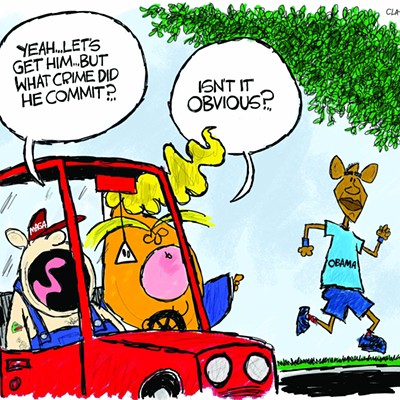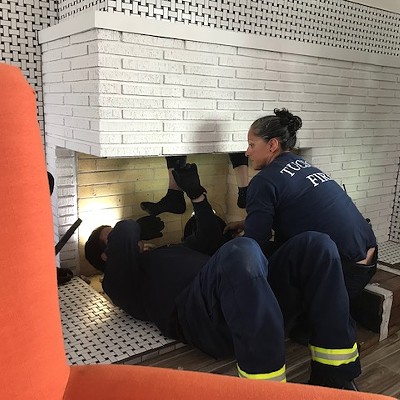Among them is Dr. Alison Futrell. Sitting in her small office amidst textbooks on the ancient Romans and Greeks, she expresses a thoroughly modern fear: that she or other instructors could face a repeat of the violence that struck here in October, when the despondent student gunned down three nursing college professors.
"I realize that the odds are very much against a similar situation occurring again," says Futrell, who teaches history on the sprawling campus. "But I'm at a loss whether there's anything the university can do to safeguard against this kind of act."
Similar concerns are heard across the nation, as colleges struggle to protect themselves from attacks like the one at the UA, where Flores shot two professors in front of their horrified class, and a third in her office.
Such incidents have become frighteningly common. In August, a professor and student were killed in a murder-suicide at the University of Arkansas; in May, a gunman shot a professor before killing himself at Pacific Lutheran University in Tacoma, Wash.; in January, a failing student opened fire, killing the dean, a teacher and another student at the Appalachian School of Law in Virginia. A local physician familiar with the 43-year-old gunman described him as "a ticking time bomb."
These attacks shatter the notion that colleges are immune to the perils of the outside world. "We're just a mirror of the larger community," says John Megerson, police director at Southwest Texas State University, and an official with the International Association of Campus Law Enforcement Administrators.
"In spite of the safety nets that we set up on campus, a handful of individuals can fall through that protective net. We have over 16 million students in post-secondary education in this country, and with a school the size of the University of Arizona, or the size of ours--we have 25,000 people here--its almost impossible to predict who is going to go over the edge."
At the same time, campuses tread a fine line between security and academic freedom. College police departments have grown increasingly sophisticated over the last decade, and their arsenals include everything from night-vision goggles and high-powered rifles to pepper spray. But schools that go too far "can wind up creating a quasi-police state, where going to classrooms and dormitories is like going through airport security checkpoints," says Sheldon Steinbach, general counsel for the American Council on Education.
Even strict policies don't provide a ready answer: Like most campuses, the UA already prohibits firearms, but that hardly stopped the gunman. And campus police responded to the shootings within three minutes. "You can't improve much on that," says university spokeswoman Sharon Kha. "This isn't a case where having armed guards posted around the building would have prevented anything from happening."
Instead, Megerson says the most important element for maintaining campus security is decidedly low-tech: good communication between police and faculty. If officers are "viewed as a necessary evil, then you don't have the necessary linkages with faculty and staff," he says. "But if the police are viewed as part of the university community, and we're all working towards the same end, then you get those linkages."
Fostering better communication can be as simple as location. For example, Megerson's department recently moved its headquarters to the center of the Southwest Texas State campus, rather than on the fringes--"in the south forty, like at many schools," he says. "Now we have faculty right upstairs from our offices."
At the same time, instructors must take the initiative to contact police when they first sense that students may pose a risk, says Susan Riseling, University of Wisconsin police chief, and chairperson of the International Chiefs of Police University and Colleges division. Her department often gets calls from professors only minutes before they deliver bad news--a failing grade or doctoral thesis--to a volatile student. "Think about someone telling you that the last four or five years of your life wasn't working out," she says. "Even a sane person would be very upset."
Riseling says there are always signs when a person is spiraling towards violence. "No one just snaps. There's a very predictable process" as individuals become isolated and angry. She advises instructors on her campus to immediately notify police if they sense that a student poses a risk. That way, "police can intervene to stop the process," she says. Intervention can range from counseling to restraining orders.
Still reeling from the recent attack, the UA is relying on education and better communication as it struggles to reclaim a sense of security. A series of workshops for instructors "will focus upon assessing mental health risks," says Sharon Kha, "how to identify people in trouble, how to get help to them."
Back in her office, Dr. Futrell is skeptical. "Workshops about at-risk students expands the burden on us to be able to recognize symptoms," she says. "But most of us are not psychologists or social workers. So being able to detect someone who's having trouble in a class with several hundred people is difficult. I'm not secure at all that I could pick someone out."












